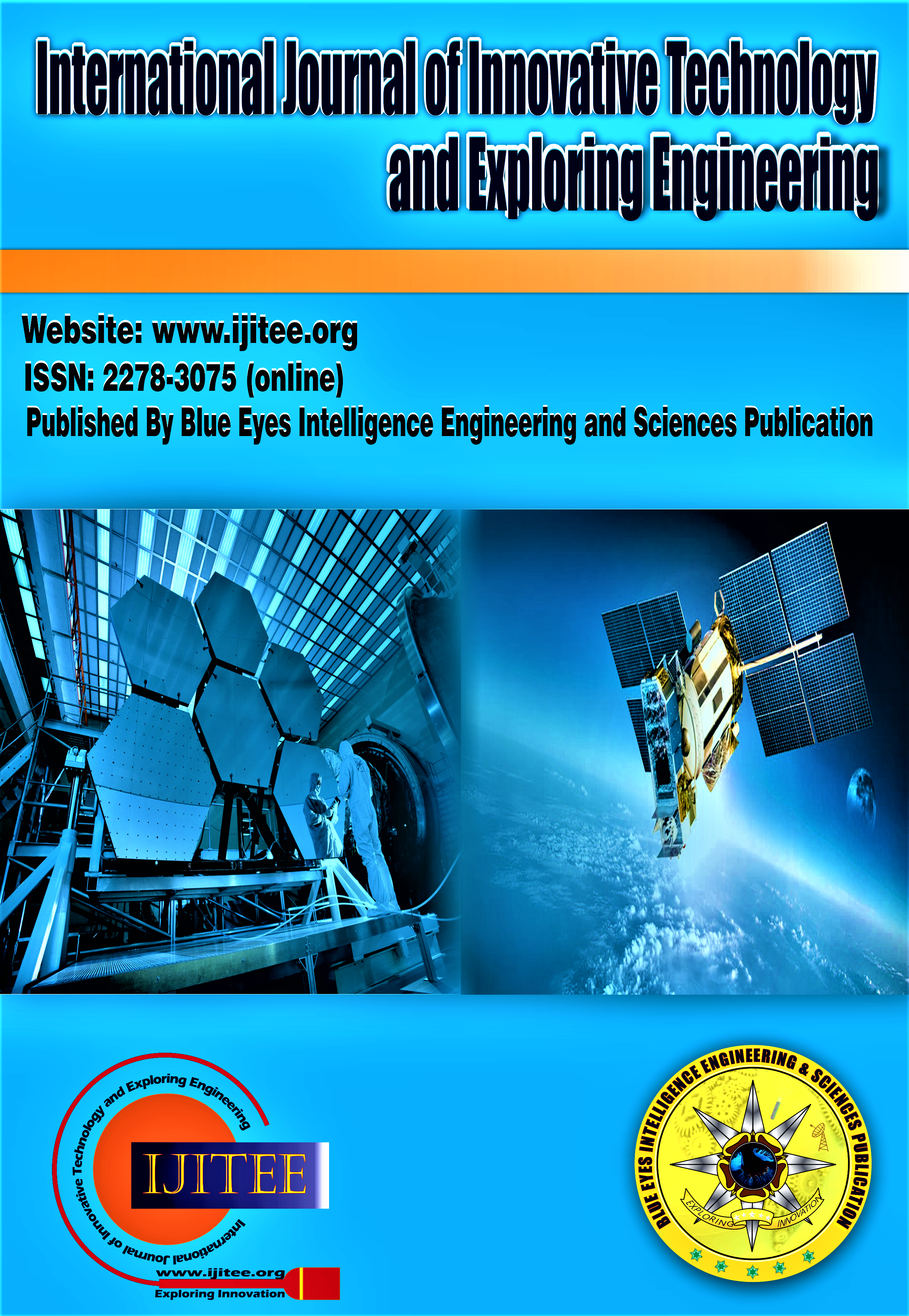Enhancing Arabic Sign Language Recognition using Deep Learning
Main Article Content
Abstract
The present time, Sign language is very important for people who suffer from hearing loss or who cannot speak. Normal humans tend to disregard the significance of signal language, which is a mere supply of communique to mute and deaf societies. So, this study proposes a developed model for sign Language Recognition for Arabic using the Deep learning Convolutional Neural Network (CNN) algorithm. Then set the algorithm by developing programming on Open-CV, using Python language. The dataset contains 54049 snapshots of Arabic signal language alphabets. The 32 folders were created, and each one of them included 1500 images incorporating hand gestures in at-variance environments. The data set was divided into a training section with a percentage of 70 %, a section for testing with a percentage of 20 %, and a section for validation with a percentage of 10 %. The results show that the suggested model achieved an accuracy rate of 94.8%, and it has proven its effectiveness and success, especially after being tried and tested by several users and obtaining their comments and feedback.
Downloads
Article Details
Section

This work is licensed under a Creative Commons Attribution-NonCommercial-NoDerivatives 4.0 International License.
How to Cite
References
R. Rastgoo, K. Kiani, and S. Escalera, "Sign language recognition: A deep survey," Expert Systems with Applications, vol. 164, p. 113794, 2021. https://doi.org/10.1016/j.eswa.2020.113794
R. Kushalnagar, "Deafness and hearing loss," Web Accessibility: A Foundation for Research, pp. 35-47, 2019. https://doi.org/10.1007/978-1-4471-7440-0_3.
A. Mathew, P. Amudha, and S. Sivakumari, "Deep learning techniques: an overview," Advanced Machine Learning Technologies and Applications: Proceedings of AMLTA 2020, pp. 599-608, 2021. https://doi.org/10.1007/978-981-15-3383-9_54.
O. I. Abiodun, A. Jantan, A. E. Omolara, K. V. Dada, N. A. Mohamed, and H. Arshad, "State-of-the-art in artificial neural network applications: A survey," Heliyon, vol. 4, no. 11, 2018. https://doi:10.1016/j.heliyon.2018.e00938.
M. J. Cheok, Z. Omar, and M. H. Jaward, "A review of hand gesture and sign language recognition techniques," International Journal of Machine Learning and Cybernetics, vol. 10, pp. 131-153, 2019. https://doi.org/10.1007/s13042-017-0705-5.
M. Kamruzzaman, "Arabic sign language recognition and generating Arabic speech using convolutional neural network," Wireless Communications and Mobile Computing, vol. 2020, 2020. https://doi.org/10.1155/2020/3685614.
R. A. Alawwad, O. Bchir, and M. M. B. Ismail, "Arabic sign language recognition using faster R-CNN," International Journal of Advanced Computer Science and Applications, vol. 12, no. 3, 2021. DOI: 10.14569/IJACSA.2021.0120380.
S. Aly and W. Aly, "DeepArSLR: A novel signer-independent deep learning framework for isolated arabic sign language gestures recognition," IEEE Access, vol. 8, pp. 83199-83212, 2020. . http://doi:10.1109/ACCESS.2020.2990699.
S. Hayani, M. Benaddy, O. El Meslouhi, and M. Kardouchi, "Arab sign language recognition with convolutional neural networks," in 2019 International conference of computer science and renewable energies (ICCSRE), 2019, pp. 1-4: IEEE. http://doi: 10.1109/ICCSRE.2019.8807586
Y. Saleh and G. Issa, "Arabic sign language recognition through deep neural networks fine-tuning," 2020. https://doi.org/10.3991/ijoe.v16i05.13087
B. Hisham and A. Hamouda, "Arabic sign language recognition using Ada-Boosting based on a leap motion controller," International Journal of Information Technology, vol. 13, pp. 1221-1234, 2021. https://doi.org/10.1007/s41870-020-00518-5
F. H. Almasoudy, W. L. Al-Yaseen, and A. K. Idrees, "Differential evolution wrapper feature selection for intrusion detection system," Procedia Computer Science, vol. 167, pp. 1230-1239, 2020. https://doi.org/10.1016/j.procs.2020.03.438
N. S. Sagheer and S. A. Yousif, "Canopy with k-means clustering algorithm for big data analytics," in AIP Conference Proceedings, 2021, vol. 2334, no. 1: AIP Publishing. https://doi.org/10.1063/5.0042398
I. El Naqa and M. J. Murphy, What is machine learning? Springer, 2015. https://doi.org/10.1007/978-3-319-18305-3_1
S. Indolia, A. K. Goswami, S. P. Mishra, and P. Asopa, "Conceptual understanding of convolutional neural network-a deep learning approach," Procedia computer science, vol. 132, pp. 679-688, 2018. https://doi.org/10.1016/j.procs.2018.05.069
K. Shridhar, F. Laumann, and M. Liwicki, "A comprehensive guide to bayesian convolutional neural network with variational inference," arXiv preprint arXiv:1901.02731, 2019. https://doi.org/10.48550/arXiv.1901.02731
M. K. Singh, V. Kekatos, and G. B. Giannakis, "Learning to solve the AC-OPF using sensitivity-informed deep neural networks," IEEE Transactions on Power Systems, vol. 37, no. 4, pp. 2833-2846, 2021. DOI:10.1109/TPWRS.2021.3127189
G. Latif, N. Mohammad, J. Alghazo, R. AlKhalaf, and R. AlKhalaf, "ArASL: Arabic alphabets sign language dataset," Data in brief, vol. 23, p. 103777, 2019. https://doi.org/10.1016/j.dib.2019.103777
W. Vallejo, C. Díaz-Uribe, and C. Fajardo, "Google colab and virtual simulations: practical e-learning tools to support the teaching of thermodynamics and to introduce coding to students," ACS omega, vol. 7, no. 8, pp. 7421-7429, 2022. https://doi.org/10.1021/acsomega.2c00362
J. Fontenrose, Python: A Study of Delphic Myth and Its Origins. Univ of California Press, 2023.
Kaur, J., & Krishna, C. R. (2019). An Efficient Indian Sign Language Recognition System using Sift Descriptor. In International Journal of Engineering and Advanced Technology (Vol. 8, Issue 6, pp. 1456–1461). https://doi.org/10.35940/ijeat.f8124.088619
M R, Dr. P. (2022). Sign Language Recognition System. In Indian Journal of Software Engineering and Project Management (Vol. 2, Issue 1, pp. 1–3). https://doi.org/10.54105/ijsepm.c9011.011322
Deshpande, S. D., & Joshi, Y. V. (2019). Indian Sign Language Automated Learning using Region Bound Algorithm. In International Journal of Innovative Technology and Exploring Engineering (Vol. 8, Issue 11, pp. 3809–3815). https://doi.org/10.35940/ijitee.k2210.0981119
Shrivastava, Prof. (Dr. ) N., Garg, K., Singh, A. P., Jain, A., & Sharma, A. (2020). Sign Language Translation using Hand Gesture Detection. In International Journal of Recent Technology and Engineering (IJRTE) (Vol. 9, Issue 2, pp. 509–512). https://doi.org/10.35940/ijrte.b3620.079220
Das, S., S, S., M, A., & Jayaram, S. (2021). Deep Learning Convolutional Neural Network for Defect Identification and Classification in Woven Fabric. In Indian Journal of Artificial Intelligence and Neural Networking (Vol. 1, Issue 2, pp. 9–13). https://doi.org/10.54105/ijainn.b1011.041221





